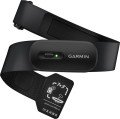Mobile operating systems that the device is compatible with.
Many modern heart rate monitors, pedometers and
heart sensors(see "Type") can be connected to a smartphone or tablet to process the collected data in a special application. Such applications provide a wide variety of possibilities that would be difficult or impossible to provide in the device itself. However, for the gadget to work properly with a smartphone or tablet, it must be compatible with the corresponding mobile OS.
Today, the market is dominated by two "OSes":
—
Android. Developed by Google, this system is embraced by a range of manufacturers, from industry giants like Samsung and Asus to lesser-known Chinese brands. The diversity of devices running on this OS is vast, as is the array of system versions, proprietary interfaces, and firmware. Therefore, when selecting a device to pair with an Android smartphone or tablet, it's advisable to ensure compatibility between the specific devices in question.
—
iOS. Exclusive to Apple's portable devices — iPhone smartphones, iPad tablets, and iPod touch media players — the proprietary operating system is consistent in its lineup. Regular and widespread OS updates ensure seamless compatibility between fitness gadgets and iOS devices. Compatibility concerns arise mainly with outdated or hacked ("jailbreak") system version
...s or older Apple devices (3 years or more).The device has
its own built-in memory.
Almost every sophisticated electronic device has a certain amount of memory, but here we specifically refer to permanent memory. This type of memory is ideal for long-term data storage, ensuring information is retained even during power outages. Its presence enables the device to operate autonomously, storing training logs, individual settings, and other essential data without the need for communication with other devices.
